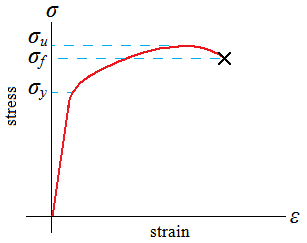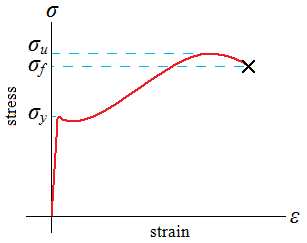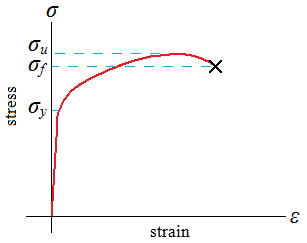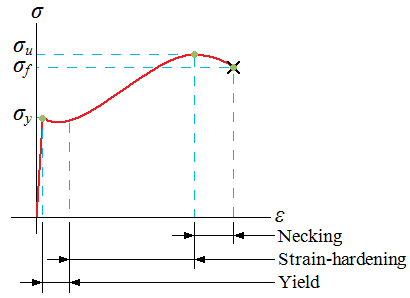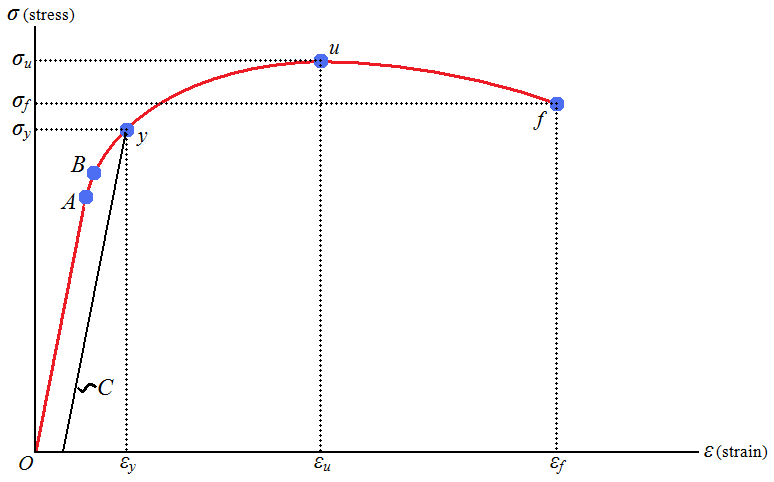
Ductile materials may exhibit a downward trend after the maximum stress is reached and fracture at point f. Others, such as cast irons and high-strength steels, fracture while the stress-strain curve is still rising, and the ultimate strength would be equal to the fracture strength, such as in the figure just below to the right, the stress-strain curve for a brittle material.
| Point A is the proportional limit |
| Point B is the elastic limit |
| Point y is the yield point |
| Line C is determined from the offset method and is used to determine the yield point (point y) |
| The slope of line OA is equal to the modulus of elasticity |
| Line AB is not a perfectly straight line, even though the specimen is elastic through this region |
| Refer to nomenclature below for the rest of the symbols |
